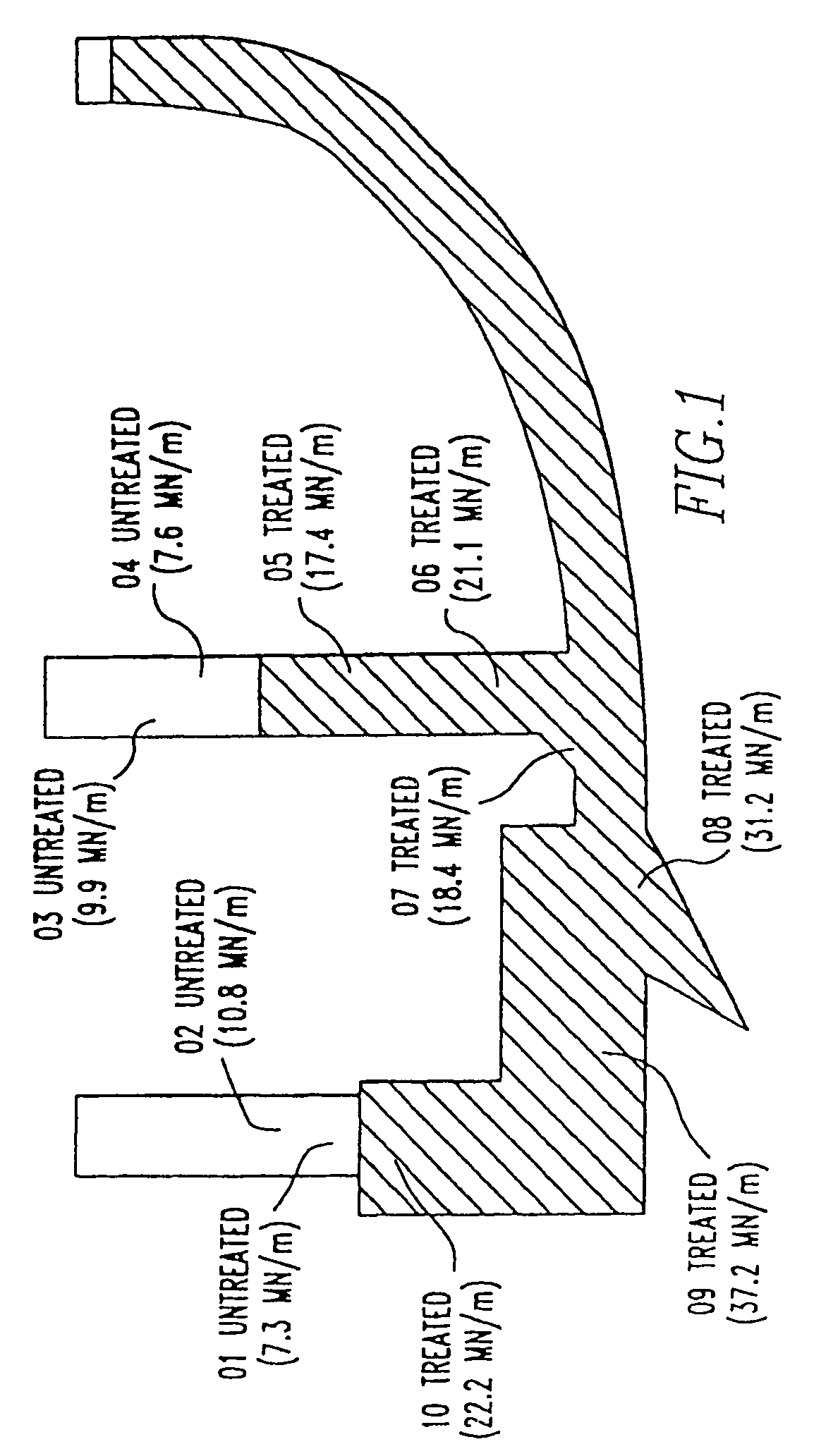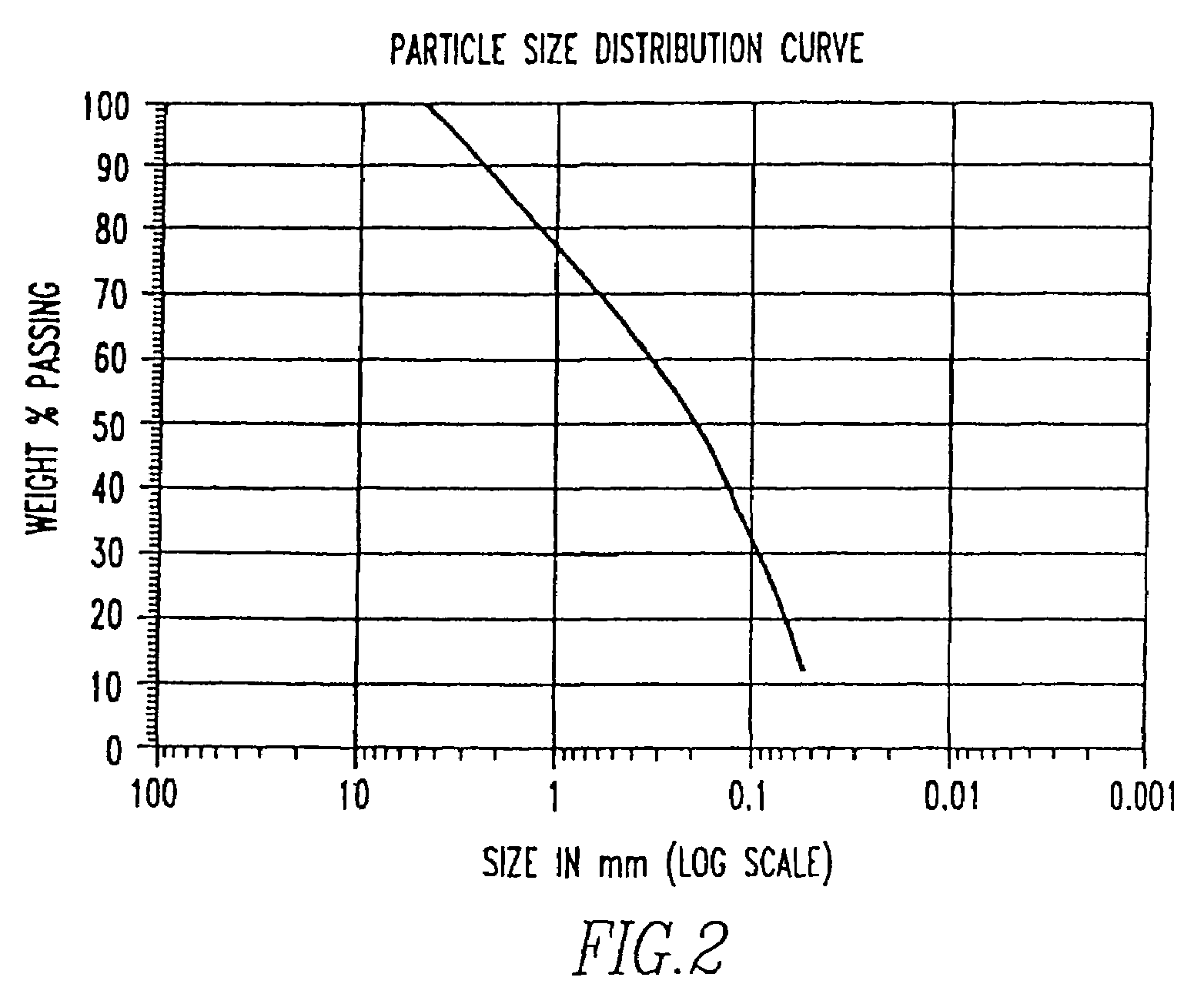Method of chemical soil stabilization and dust control
a soil stabilization and dust control technology, applied in the field of soil stabilization and dust control, can solve the problems of limited value of petroleum oils as dust suppressants, cost prohibitive for most applications, and limited value of petroleum oils as soil stabilizers
- Summary
- Abstract
- Description
- Claims
- Application Information
AI Technical Summary
Benefits of technology
Problems solved by technology
Method used
Image
Examples
examples of first embodiment
Example 1
[0032]This example discloses a formulation for producing a heterogeneous mixture depicted in our invention.
[0033]
ConstituentTrade NameManufacturerWeight %1.Severely hydrotreated50 NeutralPetro-Canada39%paraffinic hydrocarbonsHT2.Synthetic iso-alkanesDSF-65Petro-Canada33%3.Mixture of long chainTallexWestvaco28%and tricyclic organicChemicalacids and esters ofsterols and fatty acids
[0034]The Tallex material is maintained at 45–135 degrees centigrade and blended into the remaining materials using conventional blending equipment or agitation.
example 2
[0035]This example discloses a formulation for producing an emulsion.
[0036]
ConstituentTrade NameManufacturerWeight %1.Severely hydrotreated50 NeutralPetro-Canada16%paraffinic hydrocarbonsHT2.Synthetic iso-alkanesDSF-65Petro-Canada13%3.Mixture of long chainTallexWestvaco11%and tricyclic organicChemicalacids and esters ofsterols and fatty acids4.Water48%5.lignosulfonateIndulin SALWestvaco10%Chemical6.polyoxypropylenePluronic F68BASF 2%
[0037]The Tallex material is maintained at 45–135 degrees centigrade and blended into the remaining materials using conventional high shear mixers, mixer / emulsifiers, colloid mill, or other suitable mixing equipment.
first embodiment
Test of First Embodiment
[0038]A 5,000 square meter test plot was prepared to test the effectiveness of the invention as a dust control agent and soil stabilizer. A severe test in an intensely utilized area was required. A slag reclamation area in the continuous caster process of a large Cleveland, Ohio steel mill was chosen for the test. The plot selected operates 24 hours / day, 5–7 days / week and averages over 100 vehicle passes per day with the majority of vehicles large pot haulers, front-end loaders with steel-chained tires, and tractor-trailers.
[0039]Various treatments had been utilized in this area in the past including watering, chlorides, and asphalt emulsions with limited success. Applications of these chemical agents were typically 1–2 times daily for dust control. Historical applications rates for 60% solids asphalt emulsions ranged between 0.15–0.40 liters / square meter daily.
[0040]Initial observations of the surface prior to testing revealed a slag covered road comprised o...
PUM
| Property | Measurement | Unit |
|---|---|---|
| flash point | aaaaa | aaaaa |
| weight | aaaaa | aaaaa |
| chemical | aaaaa | aaaaa |
Abstract
Description
Claims
Application Information
 Login to View More
Login to View More - R&D
- Intellectual Property
- Life Sciences
- Materials
- Tech Scout
- Unparalleled Data Quality
- Higher Quality Content
- 60% Fewer Hallucinations
Browse by: Latest US Patents, China's latest patents, Technical Efficacy Thesaurus, Application Domain, Technology Topic, Popular Technical Reports.
© 2025 PatSnap. All rights reserved.Legal|Privacy policy|Modern Slavery Act Transparency Statement|Sitemap|About US| Contact US: help@patsnap.com



